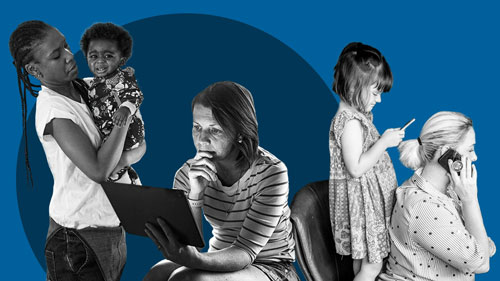NEW research shows that childcare responsibilities tended to fall to women during the initial wave of the Covid-19 pandemic in the United States. In a new study, researchers discovered that women took on more childcare than men. The scientists looked into heterosexual married couples, where each spouse was working full-time during the first wave of the Covid-19 pandemic in the U.S.
The research, which appears in the Journal of Applied Psychology, also highlights the effect that different strategies for managing childcare and paid work had on the well-being and job performance of men and women.
Stay informed with live updates on the current Covid-19 outbreak and visit our coronavirus hub for more advice on prevention and treatment.
Childcare during the pandemic
Researchers have shown that in heterosexual couples, women typically take on more housework than men. Despite the gap falling over the last 70 years, a 2012 study found that across 2009–2010, women did 1.6 times as much housework as men, while this rate increased to 1.7 times for married women and 1.9 times for mothers.
In particular, as the present research notes, women typically take on more home childcare work than men. In contrast, men usually do more work outside of the home, with more opportunities to focus on their careers.
This caring work may also be outsourced, typically by dual-earning couples where this is affordable.
However, the Covid-19 pandemic has disrupted many of the work patterns that underlie these traditional and unequal gender roles.
During the peak of each wave of the pandemic, many countries instigated lockdown measures, mandating that people work from home where possible.
At the same time, nurseries and schools have periodically closed, with many couples unable to outsource childcare.
Consequently, dual-earning couples with children have both found themselves working from home, often without a reduction in paid working hours and without the ability to outsource childcare. For many, this has blurred the distinctions between home and work.
As a result, these disruptions could also have affected the gendered distribution of childcare.
The researchers behind the present article wanted to see how heterosexual married couples with children negotiated these new circumstances, and whether this encouraged them to create a more equal approach to family and work.









